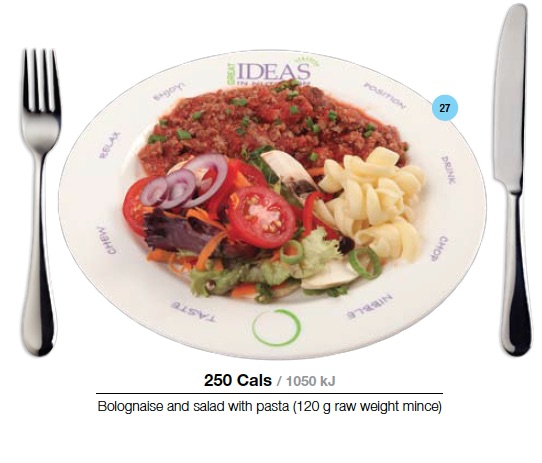The Protein Shake Up

Protein’s importance is widely recognized in bariatric surgery because requirements are at least as high after surgery as before, yet stomachs are so much smaller.
Emerging research is suggesting that the distribution of our protein intake throughout the day can be just as important for maintaining muscle mass as the total quantity. One study found that consuming more than 30g of protein at a time provided no additional benefit, with the maximum benefit achieved at 30g.
Eating enough protein is essential for building and maintaining muscle mass and function. The older we get the faster our body breaks down our muscle after building it, to the point where we can almost pump ourselves up at the gym and slowly start deflating as we walk out the door. Muscle has an important impact on our metabolic rate, or how many calories our body burns in the day. Our calorie burning ability influences how easy it is to gain, lose or maintain weight.
So how much protein do we need and can we get enough at each meal without only eating meat?
There are varying recommendations for protein intake following bariatric surgery ( gastric bypass, sleeve gastrectomy and gastric band ) . The recommendations fall within the range of 50 – 80g of protein per day for most people. Taller individuals with higher muscle mass fall towards the top of this range and may even have needs that exceed 80g per day.
If this protein intake is spaced out between three periods in the day, then this would suggest that 16 – 26g would be ideal within each period, with a maximum of 30g in any period. If a period includes a meal and a snack, then we can divide the day into Breakfast plus morning snack, Lunch plus afternoon snack and dinner plus supper snack.
My assessment of the usual intakes down the track after surgery is that dinner would usually provide an easy opportunity to consume sufficient protein via intake of meat, poultry, fish, egg dishes or legumes such as black beans or lentils. Breakfast and lunch are the riskier times, where haste and convenience can influence intake.
Let’s review the protein content of some common breakfast meals that equate to approx. 200 Cals:
So, it seems it is not so easy to achieve the maximum of 30g or even 1/3 of the total requirement at breakfast after bariatric surgery, being 16-26g.
This means that what we eat at the morning snack is going to make or break a well-proportioned daily protein intake.
Let’s look at some options that can make up the difference and equate to approx. 100 Cals:
Morning snack options of approx 100 Cals that would not have contributed to achieving the protein target would be:
You can see that it would take a little planning but it is achievable. I think the take home message is that mid morning is the time to incorporate a protein based snack such as a half serve of a protein shake or bar and that cottage cheese is your friend.
A similar assessment of lunches reveals:
This places less reliance on the protein content of the snack as the amount of meat consumed at lunch approaches a 100g serve.
Evening meals planned around the bariatric plate model will result in greater than 20g protein where half the plate is filled with meat, poultry or fish.
Problems arise where meat is not well tolerated, such as commonly reported in gastric banding and also in other surgeries due to reduced stomach acid from the smaller stomach size or from long-term use of anti reflux medications.
Amanda,
What is your opinion on the accuracy of myfitnesspal.com? I am really only interested in tracking Calories, Carbs and Protein on a daily basis.
Note, I have a dickens of a time trying to get to my recommended 100-130g of Protein per day (not unreasonable since I lift weights and run 5 times a week), but at least I can plan a little better using this tool.
Hi, I think you can rely pretty well on My Fitness Pal or CalorieKing. My Fitness Pal has the ability for individuals to enter data on new products, so there is the potential for error, but I think it is fine for your purpose.
I think we all would have a dickens of a time trying to consume 100 - 130g Protein per day in food. I would suggest you need a concentrated Protein supplement - like the New whey tube that contains about 40g of protein in about 100ml.
My books show the protein content of each food and each recipe - see the little blue dot in the image, though to reach the 130g mark, you would still need to add supplements because you just can't take in the volume after surgery to get protein and variety and adequate intake of other nutritional foods and live an interesting life all at the same time.
Regards
Amanda
Thanks for this article and for linking to and explaining the research behind the recommendations for amount of Protein intake. If I’m understanding correctly, it looks like it’s very possible to achieve the recommended ranges for Protein intake within each window of meal plus snack as long as you’re a little careful with what you choose.
That’s right in line with what I’ve been taught – choose protein first at meals and Snacks, then go for veggies since they’re nutritious, filling, and low-calorie. Then go for fruit and healthy starches. It looks like as long as you try to include high-protein options at each eating occasion, the numbers should work themselves out – even if you don’t want to eat meat 6 times a day.
Thanks for going over the numbers so carefully and providing meal and snack suggestions! Very useful information.
In at 6 week in and it's very hard to eat or drink, I get full very fast. Bypass surgery, I try to drink a Protein Shake 25 gr and a Protein bar 13gr, but it's very hard to eat anything else. So how to get more protein and Water ?






alwaysvegas 702
Posted
Thank you for the post and link to the scientific study. I'd heard 30g Protein thrown around quite a bit, but never did read the actual scientific study!
Share this comment
Link to comment
Share on other sites